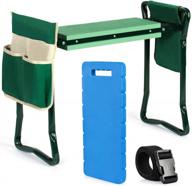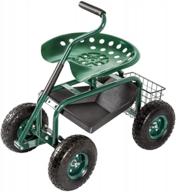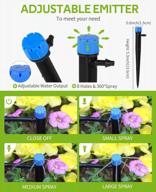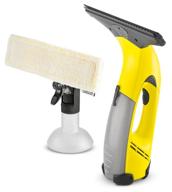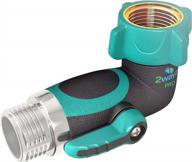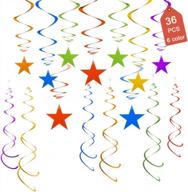How to choose the right kneeling pads for your needs
When choosing kneeling pads, there are a few key factors to consider so you can find the right option for your specific needs:
Cushioning and Thickness
Look for kneeling pads that provide ample cushioning to protect your knees and joints. Thicker pads around 1⁄2 - 1 inch thick tend to offer more comfort and support.
| Activity | Recommended Thickness |
|---|---|
| Gardening | 1/2 - 1 inch |
| Flooring installation | 1 inch |
| Tile work | 1/2 inch |
Materials
Select a pad material suited for your use case. Closed-cell foam pads provide the most cushioning for hard surfaces. Gel pads offer extra comfort and conform to your shape. Pads with waterproof outer layers are good for outdoor use.
Size and Portability
If you'll be moving around frequently, compact and lightweight pads are ideal. For stationary tasks, larger pads provide more coverage and support.
Added Features
- Kneepad straps for stability
- Textured gripping surfaces
- Reflective strips for visibility
Consider extra features like these to suit your specific work environment and needs. Taking the time to evaluate your needs will ensure you select the right kneeling pads for comfort and protection.
How to use kneeling pads for gardening and yard work
Using proper kneeling pads can make gardening and yard work more comfortable on your knees and joints. Here are some tips for getting the most out of your kneeling pads:
Positioning
- Place pads directly on the ground where you'll be kneeling.
- For maximum comfort and support, center your knees on the thickest part of the pad.
- When shifting between working spots, slide pads along rather than walking on knees.
Technique
Use proper kneeling posture to reduce strain:
- Keep back straight and avoid hunching over.
- Distribute weight evenly on both knees.
- Take regular standing breaks to give knees a rest.
Top products in 🧹 Mopping Supplies
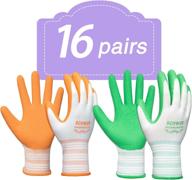

8 Review

Outdoor Use Tips
- Look for waterproof and weather-resistant pads.
- Shake off excess dirt before storing.
- Allow pads to fully air dry before putting away.
- Clean with mild soap and water as needed.
Pair with Kneepads
For even more protection, wear kneepads underneath or over your kneeling pads.
Caring for Knees
Prevent knee soreness and injuries:
- Stretch and warm up knees before gardening.
- Take regular breaks.
- Use a soft kneeling mat if working on hard surfaces like concrete.
Using kneeling pads correctly helps make yard work easier on your joints.
How to Clean and Care for Your Kneeling Pads
With regular cleaning and proper storage, you can extend the life of your kneeling pads and keep them in great shape.
Cleaning
- Shake off excess dirt and debris after each use.
- Spot clean with a damp cloth, mild detergent, and warm water.
- For thorough cleaning, remove the cover and hand wash if possible.
- Allow pads to fully air dry before using or storing.
Sanitizing
For extra disinfecting:
- Make a sanitizing solution of 1 tbsp bleach per 1 qt water.
- Dip a clean cloth in the solution and wipe down the pads.
- Rinse thoroughly with clean water and allow to fully dry.
Storage
Proper storage helps maintain your pads:
- Roll up pads loosely to avoid creasing.
- If stacked, don't place heavy objects on top.
- Store in a cool, dry place away from direct sunlight.
- Hanging pads can help retain shape.
Signs to Replace
Look for these signs it's time to replace kneeling pads:
- Visible cracks, tears, or holes
- Flattened, compacted cushioning
- Permanent staining or unremovable odors
With regular cleaning and proper care, your kneeling pads can provide years of comfortable use.
How to Get the Most Comfort from Your Kneeling Pads
Kneeling pads provide cushioning for your knees during gardening, flooring, and other work. Follow these tips to maximize the comfort you get from your pads.
Choose the Right Thickness
Thicker pads around 1 inch thick tend to offer the most knee comfort and support during prolonged activity.
Look for Ample Cushioning
Prioritize pads made of soft, shock-absorbing materials like:
- Foam - Closed-cell foam offers the most cushioning
- Gel - Conforms to the knees for customized comfort
- Memory foam - Provides soft yet firm support
Find the Right Size
Larger pads distribute pressure over more surface area for greater comfort. But very large pads can also limit mobility.
Use Proper Positioning
- Center knees over the thickest pad area.
- Keep knees hip-width apart for stability.
- Avoid kneeling with feet tucked under.
Take Regular Breaks
Give your knees intermittent rest periods when possible.
Stay Hydrated
Drinking enough water helps joints stay lubricated.
Choosing high-quality kneeling pads and using proper technique ensures maximal comfort during any floor-level task.
Similar products
How to Find the Best Deals on High Quality Kneeling Pads
You can find affordable prices on top-rated kneeling pads with a savvy shopping strategy. Here are some insider tips to get the best deals:
Shop at the Right Times
- Major holidays like Memorial Day have sales on kneeling pads.
- Look for clearances at the end of the season.
- Sign up for store loyalty programs for exclusive promos.
Compare Prices
Research prices across retailers:
- Online stores like Amazon, Walmart, Home Depot
- Sporting goods stores like Dick's and REI
- Hardware shops like Ace Hardware
Find Coupons and Cash Back
Save by combining:
- In-store coupons from newspaper flyers
- Online coupons and promo codes
- Cash back sites like Rakuten for additional savings
Buy Discounted Multi-packs
Multi-packs often provide a lower per-unit price.
Consider Buying Used
Gently used pads from sellers like Craigslist or Facebook Marketplace can provide significant savings.
Using these tips can help you find quality kneeling pads that are comfortable, durable, and budget-friendly.
How To Choose The Right Size For Aebderp Kneeling Pad?
To choose the right size for the AebDerp kneeling pad, follow these steps:
- Measure your leg circumference 4"/10 cm above the knee cap and around the calf.
- Use a soft measuring tape to get your top strap measurement by wrapping the tape around your leg just above your kneecap, rather than high up on the quad. To get your bottom strap measurement, wrap the tape around your leg just below the kneecap.
- Go by the above the knee measurement. The top strap is the measurement that matters more. On the high end of a size range? Size up if you aren't sure.
- Make sure the loop strap reaches as far across as it can without having extra strap flappage. About an inch of exposed hook is okay. The overlap is where the strength comes from.
- Consider the fit of the kneeling pad. If the size is not correct, it will not protect your knees as needed, even more, it can cause additional acute damage.
- Look for a knee pad that will last for a long time even if it used daily and pounded frequently.
Another interesting products
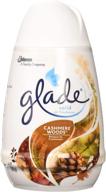

12 Review

What Is The Difference Between The Top Strap And The Bottom Strap When Measuring For Knee Pads?
According to the sources, the difference between the top strap and the bottom strap when measuring for knee pads is that the top strap measurement is taken just above the kneecap, while the bottom strap measurement is taken just below the kneecap. The top strap is the measurement that matters more, and it keeps the pads in position when you stand or crawl. The bottom strap does most of the holding, and it is mainly in rubber coverage and number of straps. The loop strap should reach as far across as it can without having extra strap flappage, and about an inch of exposed hook is okay. The overlap is where the strength comes from. Knee sleeves are designed to fit your leg while standing straight and at the bottom of a squat. Measure your leg size somewhere in between – at about a 30° degree angle. Knee sleeves are designed to contour the knee joint and surrounding calf, quad, and hamstring muscles. To get the best measurement, you’ll want to measure the circumference at the top of your calf. That’s about 4” below the midpoint of your kneecap.
What Is The Purpose Of The Top Strap When Measuring For Knee Pads?
The purpose of the top strap when measuring for knee pads is to keep the pads in position when you stand or crawl. The top strap is the measurement that matters more, and it should be wrapped around your leg just above your kneecap, rather than high up on the quad. The loop strap should reach as far across as it can without having extra strap flappage, and about an inch of exposed hook is okay. The overlap is where the strength comes from. If the top strap pops open, it is an indication that you probably need to size up for longer straps. The top strap is crucial in ensuring that the knee pad fits your leg correctly and provides the necessary protection.
What Is The Difference Between Measuring For Knee Pads With A Top Strap And Without A Top Strap?
When measuring for knee pads, the difference between measuring with a top strap and without a top strap is that the top strap measurement is taken just above the kneecap, while the bottom strap measurement is taken just below the kneecap. The top strap is the measurement that matters more, and it keeps the pads in position when you stand or crawl. Some kneepads have top and bottom straps, while others have only bottom straps. Bottom straps do most of the holding, while top straps keep the pads in position when you stand or crawl. When measuring for knee sleeves, the leg size should be measured somewhere in between, at about a 30° degree angle, and the leg circumference should be measured from about 4” below the kneecap. Knee sleeves are designed to contour the knee joint and surrounding calf, quad, and hamstring muscles. The ideal fit for knee pads or sleeves is one that is snug, without being uncomfortable, and nothing should slide or move once all straps are secure.





